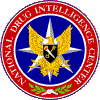
|
National Drug Intelligence Center
National Drug Threat Assessment 2007
October 2006
Appendix
C. OCDETF Regional Summaries
Great
Lakes Regional Overview
Regional Overview
The Great Lakes OCDETF Region encompasses Indiana,
Kentucky, Michigan, Minnesota, Ohio, Wisconsin, and the Northern and
Central U.S. Attorney Districts of Illinois. It includes the Chicago, Lake
County, Michigan, Milwaukee, and Ohio HIDTAs and 13 U.S. Attorney
Districts. The region comprises urban areas including Chicago (IL),
Cleveland (OH), Columbus (OH), Detroit (MI), Gary (IN), Indianapolis (IN),
Louisville (KY), Milwaukee (WI), and Minneapolis/St. Paul (MN), as well as
large, sparsely populated agricultural areas, which often are used by
traffickers to produce methamphetamine and marijuana. Chicago and Detroit
serve as the principal wholesale illicit drug distribution centers in the
region, supplying drug markets both in and outside the region.
Drug Threat Overview
The distribution and abuse of cocaine (particularly crack) and,
to a lesser extent, heroin and methamphetamine pose the most significant drug
threats to most metropolitan areas of the region, while the distribution and
abuse of methamphetamine pose the greatest drug threat in rural areas and
smaller cities. Marijuana is the most widely available and frequently abused
illicit drug in the region but generally poses a lower threat, since its
distribution and abuse rarely are associated with violent crime, as is the case
with cocaine, heroin, and methamphetamine. The threats posed by other dangerous
drugs and the diversion and abuse of pharmaceuticals vary but usually are lower
than the threats posed by other major drugs.
To Top To Contents
Strategic Regional Developments
-
The influence of Mexican DTOs over illicit drug transportation
and wholesale distribution in the region is unrivaled and has spread from larger
cities such as Chicago and Detroit to smaller markets and suburban areas.
-
Recent increases in the availability and abuse of illicit drugs
in some suburban areas and smaller communities in the Great Lakes Region,
particularly in Illinois, Indiana, and Ohio, have contributed to increases in
the number of drug abusers and distributors who commit violent crimes (homicide,
kidnapping, and assault) and property crimes (automobile theft, shoplifting, and
identity theft).
-
Heroin use is increasing among affluent, young Caucasian users
in areas of Michigan, Ohio, Indiana, and Wisconsin, owing in part to a decrease
in negative perceptions regarding heroin use. Heroin use also is increasing
among some abusers of prescription narcotics such as OxyContin who switch to
heroin when they experience difficulty obtaining prescription narcotics.
-
Cannabis cultivation is a significant problem in Kentucky, which
ranks second after California in the number of seized indoor and outdoor grow
sites.
-
Asian criminal groups, primarily ethnic Vietnamese criminal
groups from Canada, are smuggling high potency Canada-produced marijuana into
the Great Lakes Region at an increasing rate.
-
Members of local and nationally affiliated African American and
Hispanic street gangs such as Gangster Disciples, Vice Lords, Black Peace
Stones, and Latin Kings, who distribute illicit drugs--cocaine, heroin,
marijuana, and PCP (phencyclidine)--at various distribution levels in the region
have branched out to form additional gangs in cities, including Chicago (IL),
Cleveland (OH), and Detroit and Flint (MI).
-
Mexican DTOs are the most significant drug money launderers in
the Great Lakes Region; they principally transport bulk quantities of cash and
monetary instruments overland to Mexico.
Variations From National Trends
-
Methamphetamine production levels at small capacity laboratories
have decreased in many areas of the Great Lakes Region, paralleling a national
trend; however, production has increased overall in Ohio and Michigan during the
past 5 years.
-
Fentanyl has emerged as a public health threat in some areas of
the Great Lakes Region, most notably in Chicago and Detroit, which have reported
hundreds of fentanyl-related overdoses and over 100 fentanyl-related deaths
since September 2005. A significant number of these overdoses and deaths have
been attributed to clandestinely produced fentanyl of an unknown origin, most
likely Mexico.
-
Retail-level MDMA distribution in the region, which was
previously dominated by Caucasian traffickers in loosely organized groups, has
expanded to include African American crack dealers. For example, many crack
dealers on street corners in Cleveland (OH) now are also selling MDMA along with
crack. MDMA was previously sold almost exclusively by Caucasian distributors to
teenagers and young adults in middle-class neighborhoods, on college campuses,
and at nightclubs, concerts, and raves.
-
Prescription monitoring programs in several states in the Great
Lakes Region have been successful in detecting trends in pharmaceutical
diversion and abuse. For example, doctor-shopping has become more difficult as a
result of the implementation of several statewide monitoring programs, including
the Michigan Automated Prescription System (MAPS) and the Kentucky All-Schedule
Prescription Electronic Reporting (KASPER) System.
-
Some retail drug distributors in the Great Lakes Region are
laundering drug proceeds through fraudulent real estate transactions and
mortgage fraud. The Chicago Police Department estimates that gang members in the
city laundered $180 million of their drug proceeds in this manner during the
last 3 years.
To Top To Contents
To Previous Page
To Next Page
To Publications Page To
Home Page
|
![]() To Contents
To Previous Page
To Next Page To Publications Page
To
Home Page
To Contents
To Previous Page
To Next Page To Publications Page
To
Home Page
